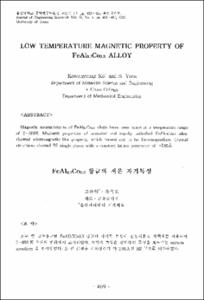담화분석, 무엇을 어떻게 가르칠 것인가?
- Alternative Title
- On Harmonious Grafting of Discourse Analysis onto English Education
- Abstract
- There are two ways to approach language. One is formal and refers to facts inside language. The other is contextual and refers to facts outside language. In order to account for discourse, we need to look at these two features together because formal, cohesive devices are not sufficient enough to create coherence maintained by the connection of underlying functions of what is said or written.
This study, whose focus is on DA coupled with how to teach it, includes pragmatics" a study of meaning at a given point like a snapshot. In fact, discourse is more like a moving film, revealing itself in time. In a sense, this means that the theories of conversational principles and speech acts in pragmatics are essential tools for DA and thus for the teacher and learner.
As the case stands, this study aims at making a comprehensive study of what DA looks like and how to graft the findings of DA onto English education. To this end, this research commences with a study of what the divergence of form and function means to DA in terms of conversational principles and speech act theory. Next, it investigates what kinds of aspects cohesive devices show at units larger than sentence and why they are not enough in reinforcing the coherence of discourse. Finally, this study ends with a survey of general characteristics of discourse and how to apply the results of DA to language education. The major findings of this study are as follows.
1. Through some experiments, it's revealed that as in sentence, discourse is also well organized both with linear structure and hierarchical structure as well.
2. Like the structure of spoken discourse, that of written discourse can also be examined both in terms of surface relations of form, and underlying relations of functions and acts.
3. Through several pieces of evidence, it's confirmed again that our mind does employ knowledge schemata in the interpretation of discourse.
4. Some activities are found to be very effective in developing the skills of discourse competence: adding and removing redundant/necessary information, recombination, approximation, destroying the coherence of discourse and asking to restore it, transfer of dialogue to monologue and nonverbal to verbal and vice versa.
In brief, this study tries to show that in order to develop better language learners' communicative competence, English education should be more systematically related and reinforced with the theories and findings of DA.
There are two ways to approach language. One is formal and refers to facts inside language. The other is contextual and refers to facts outside language. In order to account for discourse, we need to look at these two features together because formal, cohesive devices are not sufficient enough to create coherence maintained by the connection of underlying functions of what is said or written.
This study, whose focus is on DA coupled with how to teach it, includes pragmatics" a study of meaning at a given point like a snapshot. In fact, discourse is more like a moving film, revealing itself in time. In a sense, this means that the theories of conversational principles and speech acts in pragmatics are essential tools for DA and thus for the teacher and learner.
As the case stands, this study aims at making a comprehensive study of what DA looks like and how to graft the findings of DA onto English education. To this end, this research commences with a study of what the divergence of form and function means to DA in terms of conversational principles and speech act theory. Next, it investigates what kinds of aspects cohesive devices show at units larger than sentence and why they are not enough in reinforcing the coherence of discourse. Finally, this study ends with a survey of general characteristics of discourse and how to apply the results of DA to language education. The major findings of this study are as follows.
1. Through some experiments, it's revealed that as in sentence, discourse is also well organized both with linear structure and hierarchical structure as well.
2. Like the structure of spoken discourse, that of written discourse can also be examined both in terms of surface relations of form, and underlying relations of functions and acts.
3. Through several pieces of evidence, it's confirmed again that our mind does employ knowledge schemata in the interpretation of discourse.
4. Some activities are found to be very effective in developing the skills of discourse competence: adding and removing redundant/necessary information, recombination, approximation, destroying the coherence of discourse and asking to restore it, transfer of dialogue to monologue and nonverbal to verbal and vice versa.
In brief, this study tries to show that in order to develop better language learners' communicative competence, English education should be more systematically related and reinforced with the theories and findings of DA.
- Issued Date
- 2001
- Type
- Research Laboratory
- Alternative Author(s)
- Koo, Ja Eun
- Publisher
- 人文論叢
- Language
- kor
- Rights
- 울산대학교 저작물은 저작권에 의해 보호받습니다.
- Citation Volume
- 20
- Citation Start Page
- 107
- Citation End Page
- 139
- Appears in Collections:
- Research Laboratory > Journal of humanities
- 파일 목록
-
-
Download
 000002025423.pdf
기타 데이터 / 175.09 kB / Adobe PDF
000002025423.pdf
기타 데이터 / 175.09 kB / Adobe PDF
-
Items in Repository are protected by copyright, with all rights reserved, unless otherwise indicated.